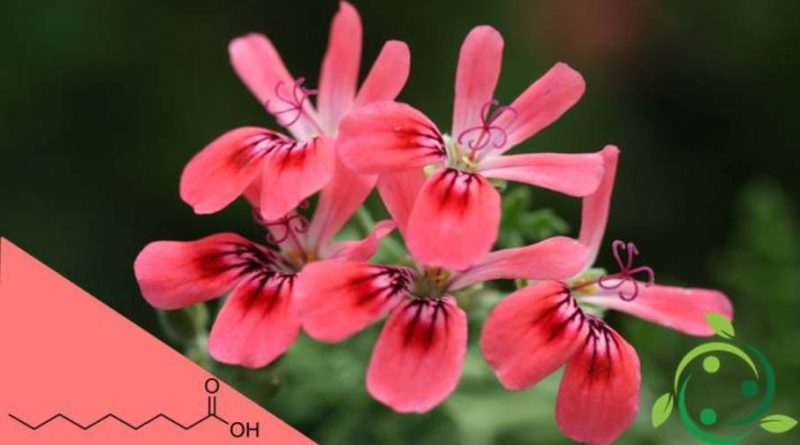Pelargonic acid
Pelargonic acid
Pelargonic acid, whose term in the official IUPAC nomenclature is nonanoic acid and whose brute or molecular formula is: C9H18O2, is a saturated aliphatic monocarboxylic acid with nine carbon atoms.
Pelargonic acid occurs naturally in plants of Pelargonium roseum (Geraniaceae) from which it takes its name due to the fact that it was first isolated from their leaves.
Pelargonic acid can be obtained chemically, together with azelaic acid, by ozonolysis of oleic acid.
It exists in nature as an essential oil, at room temperature it is an oily liquid, colorless, slightly soluble in water and with a strong rancid smell; it boils at 255 ºC and is corrosive.
Pelargonic acid is a product used as an intermediate for the production of herbicides, solvents and lubricants and for the production of esters used in the perfume and aroma industry.
As a herbicide, its action is carried out only in post-emergence of weeds or with leaf-level contact activity. Pelargonic acid is active against a wide spectrum of annual and multi-year weeds, mono and dicotyledons, algae and mosses. Pelargonic acid does not exert any residual action therefore it does not pollute the soil and is very suitable in areas very frequented by people and pets.
Warning: The information given is not medical advice and may not be accurate. The contents are for illustrative purposes only and do not replace medical advice.

